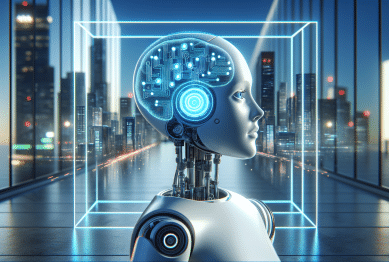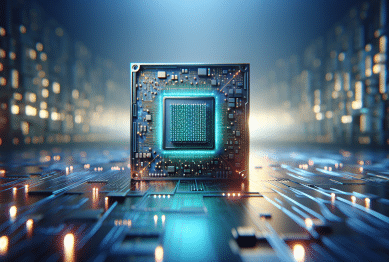Explore the evolution of smart homes and see how technology makes everyday living more convenient, secure, and energy efficient. This guide dives into connected devices, voice control, cost-saving solutions, and practical tips for adapting your home to the latest advancements in home automation.
Demystifying Smart Home Technology
Smart homes represent a shift in how technology blends with daily life, offering more streamlined control over everyday routines. At the foundation of any smart home are devices like smart thermostats, security cameras, smart speakers, and lighting systems, all connected through a central network. Integration is key. When appliances, electronics, and home systems work together seamlessly, they bring benefits in convenience and efficiency. Voice assistants and remote-access apps now allow users to control settings, monitor energy use, and even automate regular habits effortlessly. This tech has moved beyond early adopters—becoming accessible to people of various ages and backgrounds, bridging curiosity with practicality for families, professionals, and seniors alike.
The appeal of smart home automation often begins with basic tasks. For example, scheduling lights to switch on before you get home, or using smart plugs to cut energy costs by powering devices only when truly needed. These incremental upgrades demonstrate the power of connectivity. Up front, implementation may sound complex or expensive, but recent advances have reduced both cost and difficulty barriers. Inexpensive hubs can now coordinate a wide range of compatible devices, making it easier to personalize solutions based on household needs and layouts. The smart home journey often starts small—with a single smart speaker or connected doorbell—then expands as users see value in these hands-off, intuitive experiences.
Beyond convenience, automation transforms how people engage with their living space. Imagine waking up to gentle lighting, music, and the aroma of coffee without lifting a finger—scenes previously reserved for science fiction. Custom routines are easy to configure and adjust as preferences change, supporting a sense of comfort and security. Studies highlight how automation also assists individuals with limited mobility, granting greater independence through hands-free commands and monitored support systems. This growing ecosystem of connected technology sets the stage for even smarter adaptation in the years to come, constantly evolving via software updates and interoperability improvements.
Smart Security Solutions and Peace of Mind
Home security is frequently the gateway to embracing smart home upgrades. Modern wireless security systems deliver live video feeds, mobile alerts, and two-way communication between homeowners and visitors, all accessible with a smartphone. These features enable users to keep an eye on things remotely, whether they’re at work or halfway across the world. Video doorbells and connected locks also add convenience by allowing deliveries and granting access to guests without needing to be present. The sense of control and visibility into home activity promotes comfort and deters unwanted intrusions thanks to real-time monitoring and historical event logs.
What sets these smart security systems apart are integrations with sensors, alarms, and professional monitoring services. Motion detectors, glass break sensors, and smoke alarms trigger automated notifications or sirens if unusual activity is detected. Integrations can extend protection further—like automatically switching on outdoor lights or locking doors when suspicious movement is sensed. The value lies in not just monitoring, but proactively responding to security threats. Many providers offer app-based dashboards where users can customize their response settings, enhancing peace of mind without the need for complex manual setups.
Privacy remains an essential consideration in the smart security conversation. Users want confidence that their data and video feeds are encrypted and not easily accessible to outside parties. Leading brands regularly update software and security protocols to address evolving threats, while industry standards encourage transparency and user control. Experts recommend users review data-sharing practices and activate multi-factor authentication when possible. By staying aware of privacy features, individuals can strike the right balance between protection and peace of mind. Smart home security stands out as a high-impact way to experience technology’s practical value firsthand.
Energy Efficiency and Cost Management at Home
Energy savings attract many people to smart home technology. Connected thermostats, intelligent lighting, and energy monitors help households use resources more efficiently, lowering monthly bills and supporting sustainability goals. Smart thermostats can learn user schedules, automatically reducing heating or cooling when no one is home, and optimizing comfort for occupancy. Adaptive lighting systems dim and turn off bulbs as needed, all managed via voice or mobile commands. Many smart devices provide real-time feedback and suggestions, helping users become more aware of their consumption patterns. These insights encourage responsible choices, benefiting both the household budget and the environment.
Some homeowners tap into energy provider programs through their smart thermostats or meters, earning incentives for limiting use during peak demand. Smart appliances now come equipped with features to operate during off-hours, where electricity rates may be lower. Utility companies often collaborate with manufacturers to enable seamless integration, empowering users to tailor consumption without giving up convenience. Taken together, these technologies have a measurable impact. Recent studies by the U.S. Department of Energy suggest that simple automation and schedule adjustments can save up to 10% annually on utility expenses, showing that even small changes add up over time https://www.energy.gov.
The role of smart grids and renewable energy is only growing in connected homes. Solar panels, battery storage, and demand-response systems are increasingly being managed via the same platforms that oversee thermostats and plugs. As technology matures, homeowners can expect more opportunities for cost savings and carbon footprint reduction. While early adoption may require an investment, government rebates, and utility partnerships often offset startup costs. For many users, the long-term potential for savings and sustainability gives added incentive to explore smart home solutions further.
Voice Assistants and Hands-Free Living
Voice assistants—like Amazon Alexa, Google Assistant, and Apple’s Siri—play a central role in smart home ecosystems. They interpret spoken commands and link them with devices, from turning on lights to searching the internet or controlling the thermostat. The flexibility of these virtual helpers goes beyond simple convenience: They adapt to individual voices, learn preferences, and become more intuitive over time. For people with limited mobility or accessibility needs, voice control can be particularly empowering. It reduces friction, letting users ask a question, set reminders, or activate routines without reaching for a phone or remote.
As speech recognition improves, these assistants grow smarter with each interaction. They connect to calendars, stream music, provide weather updates, and more—all through natural conversation. Interoperability is expanding, as manufacturers collaborate to ensure compatibility across brands. Smart speakers now support multi-language input, local accents, and tailored responses. Developers regularly introduce new skills, opening the door to innovative uses, such as reading recipes aloud or translating languages in real time. The social element is evolving, too, with voice assistants serving as communication hubs for families or roommates. Personalized profiles allow each member of a household to receive unique responses based on their preferences.
Privacy and security concerns have prompted companies to improve protections for voice data. Most assistants let users review, delete, or restrict data sharing. Industry watchdogs emphasize reading privacy policies closely and opting out of unnecessary data storage. When incorporated thoughtfully, voice assistants enrich daily routines—saving time, empowering those with special needs, and offering a glimpse into the future of hands-free living.
Smart Appliances for the Modern Kitchen and Beyond
Kitchens increasingly serve as test beds for smart technology, thanks to appliances like internet-connected refrigerators, ovens, and dishwashers. These devices simplify cooking and meal planning, from sending grocery alerts to suggesting recipes based on ingredients on hand. Smart fridges track expiration dates and can even display calendars, notes, and streaming content. Connected ovens offer remote control, letting users preheat or adjust settings from afar—ideal for multitaskers and busy families. Many of these appliances incorporate sensors and artificial intelligence to optimize performance, minimize energy use, and ensure food safety.
Beyond the kitchen, smart laundry machines adjust cycles based on load size and recommend maintenance when needed. Robot vacuums clean on schedules or in response to voice commands—navigating efficiently and learning floor layouts over time. These machines are increasingly accessible, with manufacturers focusing on user-friendly interfaces and compatibility across platforms. Smart home tech is even making its way into bathrooms and home gyms, offering personalized lighting, automated showers, and wellness monitoring.
As connected appliances become more commonplace, manufacturers must adhere to strict standards for security, privacy, and environmental impact. Users are encouraged to update firmware regularly and choose devices that are recognized for their reliability and support. Many organizations, like the Consumer Technology Association and independent labs, evaluate product safety and sustainability practices. Choosing certified, reputable brands and following best practices ensures that smart appliances deliver convenience and innovation without compromise.
Building an Adaptable and Future-Ready Smart Home
One of the strengths of modern smart home technology is adaptability. Today’s systems are designed to grow and shift as needs evolve, often integrating with new devices through software updates or plug-and-play add-ons. Planning for the future means adopting platforms that follow open standards and emphasize compatibility—preventing the need for wholesale upgrades as tech continues to advance. Industry alliances like Matter and Zigbee Alliance promote cross-brand communication, making it easier than ever to mix and match devices according to user preference and budget.
Thinking strategically about your setup provides flexibility for future technologies, such as augmented reality interfaces, advanced health monitoring, or smart furniture. Smart homes are likely to play a growing role in energy management, elder support, and environmental monitoring. As governments and researchers push for smarter cities and eco-friendly infrastructure, homes will serve as both test beds and vital components of connected communities. Staying informed about new developments through reputable sources helps users make choices that maximize both utility and value, without sacrificing privacy or security.
Starting with a few small upgrades lets users test comfort levels and build technological confidence. Resources from advocacy organizations and educational initiatives simplify the learning curve, helping people of all ages and backgrounds tap into advantages once reserved for early adopters. The journey toward a smarter home is unique to everyone—guided by personal needs, curiosity, and a commitment to convenience, well-being, and innovation.
References
1. U.S. Department of Energy. (n.d.). Connected Homes and Buildings. Retrieved from https://www.energy.gov
2. Federal Trade Commission. (n.d.). Home Security Systems & Automation. Retrieved from https://www.consumer.ftc.gov/articles/connected-home-devices-and-your-privacy
3. National Institute of Standards and Technology. (n.d.). Smart Home Cybersecurity Guidance. Retrieved from https://www.nist.gov/programs-projects/smart-connected-systems
4. Consumer Technology Association. (n.d.). How Smart Home Tech Works. Retrieved from https://www.cta.tech/Resources/i3-Magazine/i3-Issues/2022/July-August/Safe-and-Smart-Adopting-Household-Connected-De
5. Mayo Clinic. (n.d.). Smart Home Technology for Older Adults. Retrieved from https://www.mayoclinic.org/healthy-lifestyle/consumer-health/in-depth/smart-home-technology/art-20461123
6. Zigbee Alliance. (n.d.). The Connected Home. Retrieved from https://csa-iot.org/all-solutions/connected-home/









